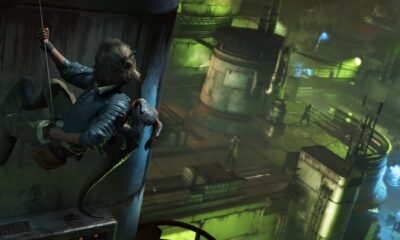Tech News
Stellar showcase: Webb spotlights dazzling super star cluster Westerlund 1

Picture of the Month: Westerlund 1
The European Space Agency has shared a dazzling image of Westerlund 1, a super star cluster situated around 12,000 light-years from Earth in the constellation Ara. It was first spotted by Bengt Westerlund in 1961, and has been captivating astronomers ever since thanks to its large, dense, and diverse collection of massive stars.
Astronomically speaking, Westerlund 1 is very young with an estimated age of between 3.5 million and five million years. Despite its youth, the cluster is home to a range of star types including OB supergiants, Wolf-Rayet stars, and yellow hypergiants that are about a million times as bright as the Sun. Some are upwards of two thousand times larger than our host star.
The creation of new stars in the Milky Way has slowed considerably as of late. Nowadays, only a handful of new stars are formed each year but around 10 billion years ago, our galaxy was pumping out dozens or even hundreds of new stars annually.
Westerlund 1 is the largest known super star cluster in the Milky Way galaxy, and also the closest to Earth. Several of the stars in the image exhibit Webb’s trademark diffraction spikes. The size of each star partially depends on its brightness and distance, and their varying color helps categorize what kind of star it is. Red glowing gas can also be seen in the photo, illuminated by nearby stars.
The ESA noted that if our solar system was located at the heart of this cluster, our sky would be filled with hundreds of stars shining as bright as the full Moon.
The ESA believes that within the next 40 million years, the super cluster will produce more than 1,500 supernovae. It is highly unlikely that anyone will be around to witness them, but it is neat to think about nevertheless.
Those interested in a more detailed look at Westerlund 1 can grab the full-size original image, which checks in at nearly 470 MB, over on the ESA’s website.
-

 Destination8 months ago
Destination8 months agoSingapore Airlines CEO set to join board of Air India, BA News, BA
-

 Breaking News10 months ago
Breaking News10 months agoCroatia to reintroduce compulsory military draft as regional tensions soar
-

 Gadgets3 months ago
Gadgets3 months agoSupernatural Season 16 Revival News, Cast, Plot and Release Date
-

 Tech News12 months ago
Tech News12 months agoBangladeshi police agents accused of selling citizens’ personal information on Telegram
-

 Productivity11 months ago
Productivity11 months agoHow Your Contact Center Can Become A Customer Engagement Center
-

 Gadgets3 weeks ago
Gadgets3 weeks agoFallout Season 2 Potential Release Date, Cast, Plot and News
-

 Breaking News10 months ago
Breaking News10 months agoBangladesh crisis: Refaat Ahmed sworn in as Bangladesh’s new chief justice
-

 Toys12 months ago
Toys12 months ago15 of the Best Trike & Tricycles Mums Recommend























